NIL
NCAA’s House settlement to pay athletes is just the beginning, what happens next?
The House v. NCAA settlement has fundamentally changed the way college sports will function. College sports have left amateurism behind for good, and right now, questions seem to outnumber answers. How does the House v. NCAA settlement change college sports? The House settlement, which began as a class-action lawsuit against the NCAA and five collegiate […]
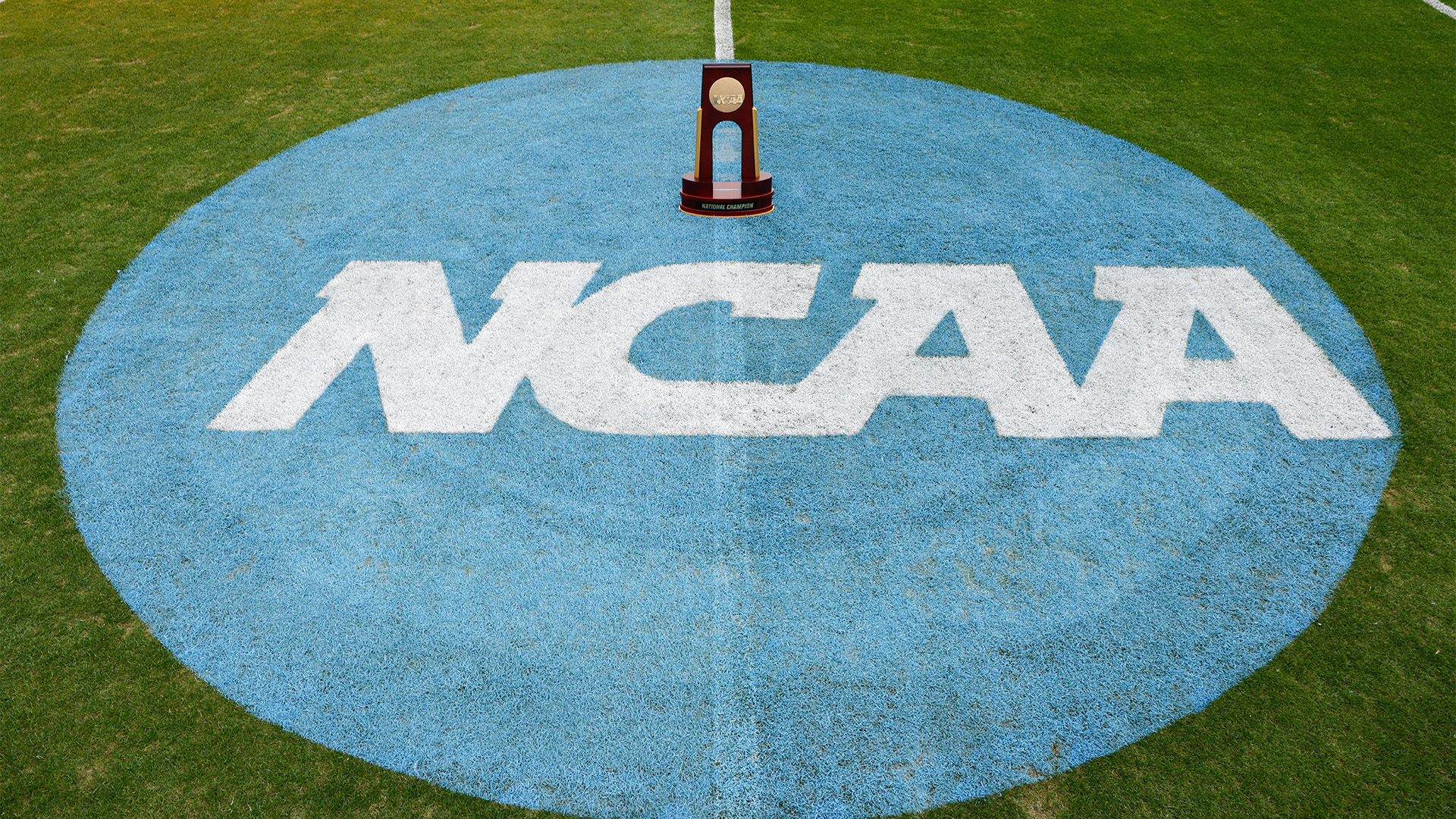
The House v. NCAA settlement has fundamentally changed the way college sports will function. College sports have left amateurism behind for good, and right now, questions seem to outnumber answers.
How does the House v. NCAA settlement change college sports?
The House settlement, which began as a class-action lawsuit against the NCAA and five collegiate conferences profiting from a former Arizona State swimmer, a TCU basketball player and others, sets up direct payments from schools to athletes for the first time. People across the country are actively debating how this new paradigm will affect universities and their athletic programs. Officials have introduced some new rules, with more on the way, but they have not yet been fully tested. Some suggest that the same issues college athletics faced before the settlement may have simply shifted focus.
Each school participating will now have a $20.5 million yearly cap to spend on its athletic programs. Football and basketball will see the vast majority of that money. NIL payments will also continue to exist in addition to the direct payments. During an interview with Panther Insider, Pitt Athletic Director Allen Greene said this is just the first step in reforming what was a broken “amateur” system.
“I think student-athlete employment is still a topic of conversation that’s going to occur,” Greene said. “I think rule setting is going to occur still, in just how we are applying all the various rules in our industry that govern what we do. And I think there’s still going to be conversations around congressional engagement, congressional involvement.”
What if schools don’t have the pool of money to pay players?
Many schools will continue to depend on wealthy alumni for support as their athletic budgets remain under pressure. Adding another $20.5 million in expenses means schools will have to make tough choices. Iowa State Athletic Director Jamie Pollard was blunt in a recent interview.
“Iowa State does not have that $20 million,” Pollard said. “But if we don’t pay it for this coming year, we have big problems, right? So we’re going to pay it.”
It’s also bigger than college athletics. Towns like Ames, Iowa, depend on college athletic programs and the tourism dollars they generate.
“Iowa State University will be faced with an athletics program with a huge annual deficit if it wants to stay in the Big 12 and if it wants to have a P4 (Power 4) athletics program,” Pollard said. “Now, we can decide we just want to have an athletics program like Northern Iowa, but that’s going to have a huge economic impact on the state, on central Iowa, on the city of Ames and on this institution.”
What will happen to NIL payments?
Those issues also don’t account for NIL payments. That money will still be available to athletes in addition to the $20.5 million pool. Just hours after the settlement received approval, leaders formed a new College Sports Commission. Brian Seeley is the man in charge. The former MLB executive and his team will review each NIL transaction to ensure it serves a legitimate business purpose and is not merely “Pay for Play.”
There will be a lot of gray areas to sift through because, up to this point, there were no rules for why a business or collective could pay a player. Conference athletic directors say it will be incumbent upon everyone to follow the rules when they are set up. Penn State head coach James Franklin said this does nothing to address the moral issue surrounding football programs, where it’s all about the dollars.
“I worry a little bit now that because of how the sport has changed,” Franklin said. “There’s people being attracted to the sport for the wrong reasons and the way the sport has changed from a transfer portal perspective and from an NIL perspective. I think there’s also young people and families that are making decisions based on a transactional experience rather than a transformational experience.”
There’s also nothing stopping a Penn State, an Ohio State or an Alabama from using the majority of their $20.5 million on their football program in addition to another $20-30 million in NIL payments. That could create an arms race that the whole settlement intended to curb. Without stronger guardrails, the gap between well-funded programs and those with fewer resources may continue to grow.
“You watch Ohio State in the men’s football game, national championship game, you don’t hear any announcers talking about NIL,” Texas Tech softball coach Gerry Glasco said. “They just don’t talk about it. And yet, Ohio State had one of the highest two or three NIL payrolls last year in college football.”
Glasco, whose school’s collective announced a second million-dollar payment to star pitcher NiJaree Canady one day before they lost in the championship of the Women’s College World Series, knows his “non-revenue” program will have to continue raising money outside of the $20.5 million. Paying a player like Canady through NIL is worth it if they want to remain relevant.
“I think it was three days after she signed, somebody told me there was over 700,000 Associated Press type articles where they said Stanford, Texas Tech and NiJa Canady and softball all in one,” Glasco said. “Seven hundred thousand times you got mentioned. Then you look at the exposure she brought to us. I think we now played 10 or 11 games on national TV.”
What will happen to “non-revenue” sports?
Whether non-revenue sports are left behind in this new college landscape is one of the many questions left unanswered in the aftermath of the settlement. It will depend on how each school divides the $20.5 million in payments and how schools chase the NIL opportunities.
Schools without football, like Gonzaga University and many others in the Big East Conference, will be flush with cash to spend on their 12- to 15-member basketball teams and their non-revenue sports teams. That could open the door to another gap between “haves and have-nots” in their respective situations. The catch is not having a football team makes it a bit harder to find that $20.5 million in a school budget.
There may also be more litigation in the near future as challenges to upcoming NIL payments make their way through the College Sports Commission. What comes next will largely depend on what rules are put in place and how they’re enforced.
contributed to this report.
NIL
Garrett Nussmeier details friendship, competition with Arch Manning
Garrett Nussmeier and Arch Manning are roommates this week at the Manning Passing Academy on the campus of Nicholls State University in Thibodaux, Louisiana. According to the two SEC quarterbacks, they seem to be getting along just fine together. Arch Manning also spoke about his relationship with Nussmeier at the event, noting their excursion to […]
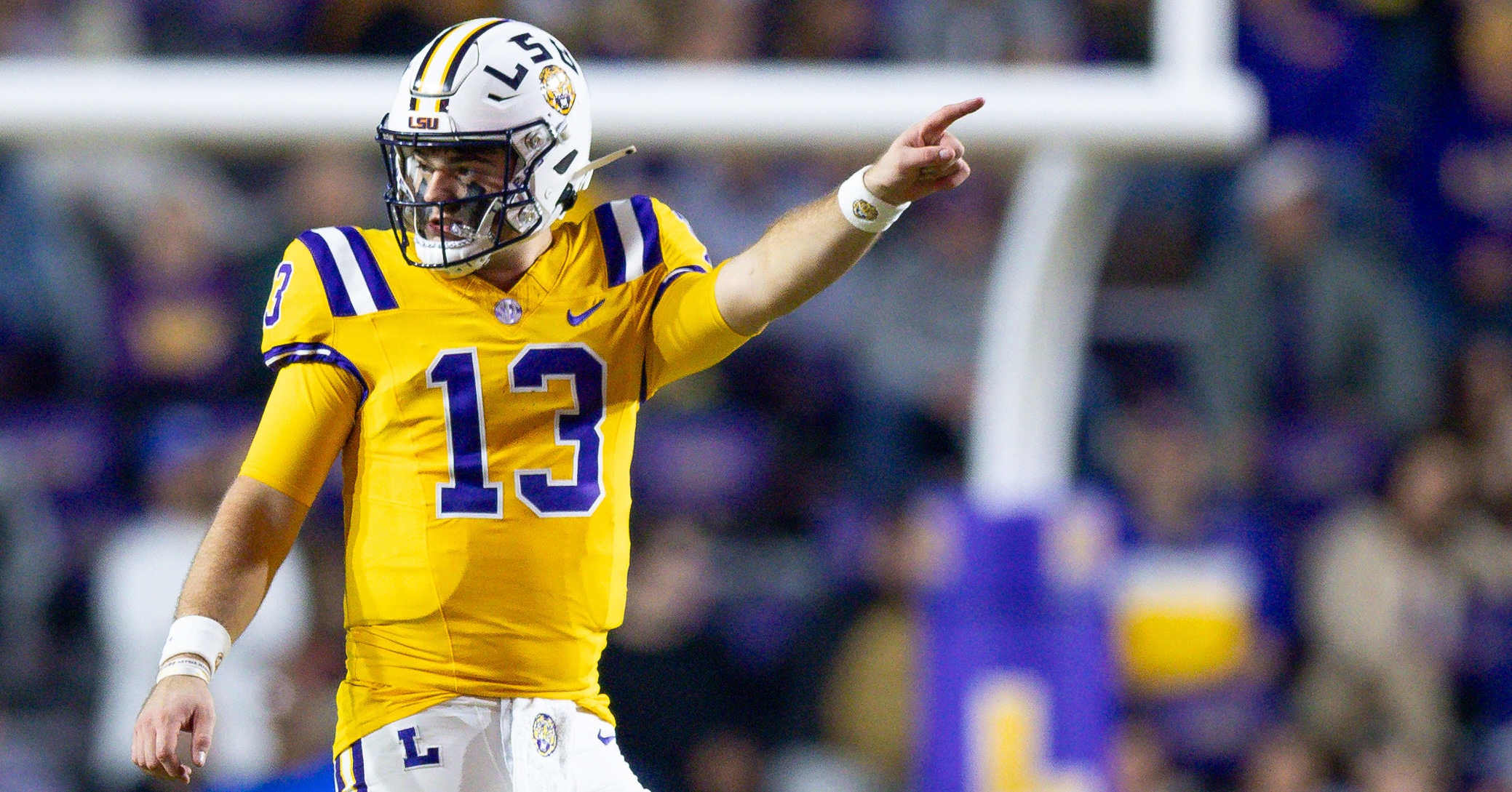
Garrett Nussmeier and Arch Manning are roommates this week at the Manning Passing Academy on the campus of Nicholls State University in Thibodaux, Louisiana. According to the two SEC quarterbacks, they seem to be getting along just fine together.
Arch Manning also spoke about his relationship with Nussmeier at the event, noting their excursion to Walmart for food and other supplies for the week. Manning called Nussmeier “the man” before complimenting his knowledge of the game.
“It means a lot to me,” Nussmeier said of Manning’s comments. “I love Arch. He’s a really good player. Want nothing but the best for him. He may say that he looks up to me, but there are definitely parts of me that looks up to him, too. His ability, his swagger, his mindset. It’s something that is really fun to watch. He’s a really, really good player. … Definitely rooting for him, and I’m very appreciative of him.”
Nussmeier said their relationship consists of them talking at times throughout the season, “chopping it up” between two SEC quarterbacks. In addition to them sharing a room together during the academy, the two also recently filmed a commercial for Raising Cane’s feature other members of the Manning family, along with the fast food chain’s owner, Todd Graves.
Despite the two being in the SEC together, Nussmeier’s LSU Tigers and Manning’s Texas Longhorns will not meet during the regular season in 2025. Instead, the Tigers’ SEC schedule will feature key matchups such as Florida, Ole Miss, Texas A&M and Alabama. For Texas, they’re set to take on the Gators as well, not to mention Georgia, and the Aggies as well.
Both teams will also kick their seasons off with a bang. Texas will head to Ohio Stadium to take on Ohio State in a rematch of the national semifinal from last season’s College Football Playoff. Meanwhile, LSU is heading to Clemson to take on the other Tigers in the other Death Valley. Nussmeier is excited to play in such a high-stakes games right out of the gates.
“Obviously it’s going to be loud,” Nussmeier said of the season opener against Clemson. “It’s going to be a very intense environment. It’s something that we welcome, that we invite. It’s a great opportunity. You come to LSU to play in environments like that. You get to play in the night game against another top-ranked team in prime time, you know? They’ve got a lot of players who are going to play for a long time, and so do we. It’s going to be a dog fight.”
Kickoff between LSU and Clemson is set for Aug. 30 at 7:30 p.m. ET and will air live on ABC. Clemson is an early favorite to win the matchup at home, according to FanDuel Sportsbook.
NIL
College Football writer clarify’s why Virginia Tech will be a player in the ACC race
One year ago, the Virginia Tech football team was expected to be a big player in the ACC race. Heck, they were expected to be a dark horse for the new 12-team College Football Playoff. In the end, neither came close to being reality as the Hokeis suffered through a second straight 6-6 season. This […]

One year ago, the Virginia Tech football team was expected to be a big player in the ACC race. Heck, they were expected to be a dark horse for the new 12-team College Football Playoff. In the end, neither came close to being reality as the Hokeis suffered through a second straight 6-6 season.
This offseason has been an offseason of change with the roster between the NFL Draft and transfer portal, and some big coaching staff changes, unlike the previous offseason. With a ton of questions entering the season, the Hokies remain a wild-card, but one national college football reporter explains why he thinks they could be a player in the ACC race when all is said and done.
National college football writer explains why Virginia Tech could be a player in the ACC race in 2025
Chip Patterson of CBS Sports released a best/worst case scenario for each ACC school, and for Virginia Tech, their best case scenario was 9-3 and their worst was 5-7. In their best scenario, Patterson explains why the Hokies can be a player this fall.
“Kyron Drones puts together his best season yet, and the hire of new offensive coordinator Philip Montgomery unlocks that extra step the Hokies offense needed to get over the hump. Virginia Tech’s 0-5 record in one-score games last season regresses back to the average and the absence of Clemson and SMU on the ACC schedule allows the Hokies to be a player in the conference title race.”
Yes, a healthy Kyron Drones under Philip Montgomery will go a long way in helping Virginia Tech be better, but Patterson notes that no Clemson or SMU on the schedule makes them a potential player in the ACC. Even though neither the Tigers nor the Mustangs are on the schedule, the Hokies face a difficult conference schedule with Louisville, Miami, and Georgia Tech, to name a few.
If Virginia Tech is going to be a player in the ACC in 2025, they will need a lot of things to go right and win more one-score games than they lose. That’s a lot that has to go right, but it can go right.
NIL
Clemson baseball adds veteran left-handed reliever with SEC experience
Clemson baseball got a little better on Saturday night. Pitching had been a major concern for the Tigers throughout the 2025 season and it led to multiple tough losses, but they have addressed some needs in the portal thanks to head coach Erik Bakich. Bakich has landed numerous big bats from the portal, but on […]

Clemson baseball got a little better on Saturday night.
Pitching had been a major concern for the Tigers throughout the 2025 season and it led to multiple tough losses, but they have addressed some needs in the portal thanks to head coach Erik Bakich.
Bakich has landed numerous big bats from the portal, but on Saturday, he picked up a commitment from 23-year-old left-handed reliever Michael Sharman. He previously spent time with Tennessee before starting 16 games with Georgia Highlands in the JUCO in 2024 with 101 strikeouts in 92.2 innings, per Jon Blau.
Clemson adds a 23-year-old lefty reliever from Tennessee.
Before pitching for the Vols last season, Sharman started 16 games for JUCO Georgia Highlands in 2024 and registered 101 Ks in 93 2/3 innings. https://t.co/OQtWl0btuT
— Jon Blau (@Jon_Blau) June 29, 2025
This is a nice get for the Tigers who need all the pitching help they can get. Sharman has plenty of experience at the age of 23 and it’s especially reassuring that he spent time with one of the bigger baseball powers in the SEC.
When he was with Tennessee, he had a 3.18 ERA with 25 strikeouts in 22.2 innings.
Clemson is quietly building one of the best rosters in college baseball ahead of the 2026 season. The Tigers have landed some legitimate MLB prospects to play the field and if they end up making it to campus, Clemson will have one of the best offensive teams in the ACC next season. They could also be in line to host another regional.
Addressing pitching needs should make fans happy as it was the biggest weakness in 2025. Bakich is taking his “getting back to a World Series” quote seriously so far this offseason.
Bakich and Brad Brownell have owned the transfer portal recently. Dabo next?
NIL
Ranking the Top Five WVU Players Who Would Have Broken the Bank in the NIL Era
NIL has changed the game in college athletics in a big way. Not only can athletes earn money from local and national businesses, but they can now be paid directly by the university they attend, thanks to the House Settlement. This got me thinking. Which former West Virginia legends would have made the most money […]
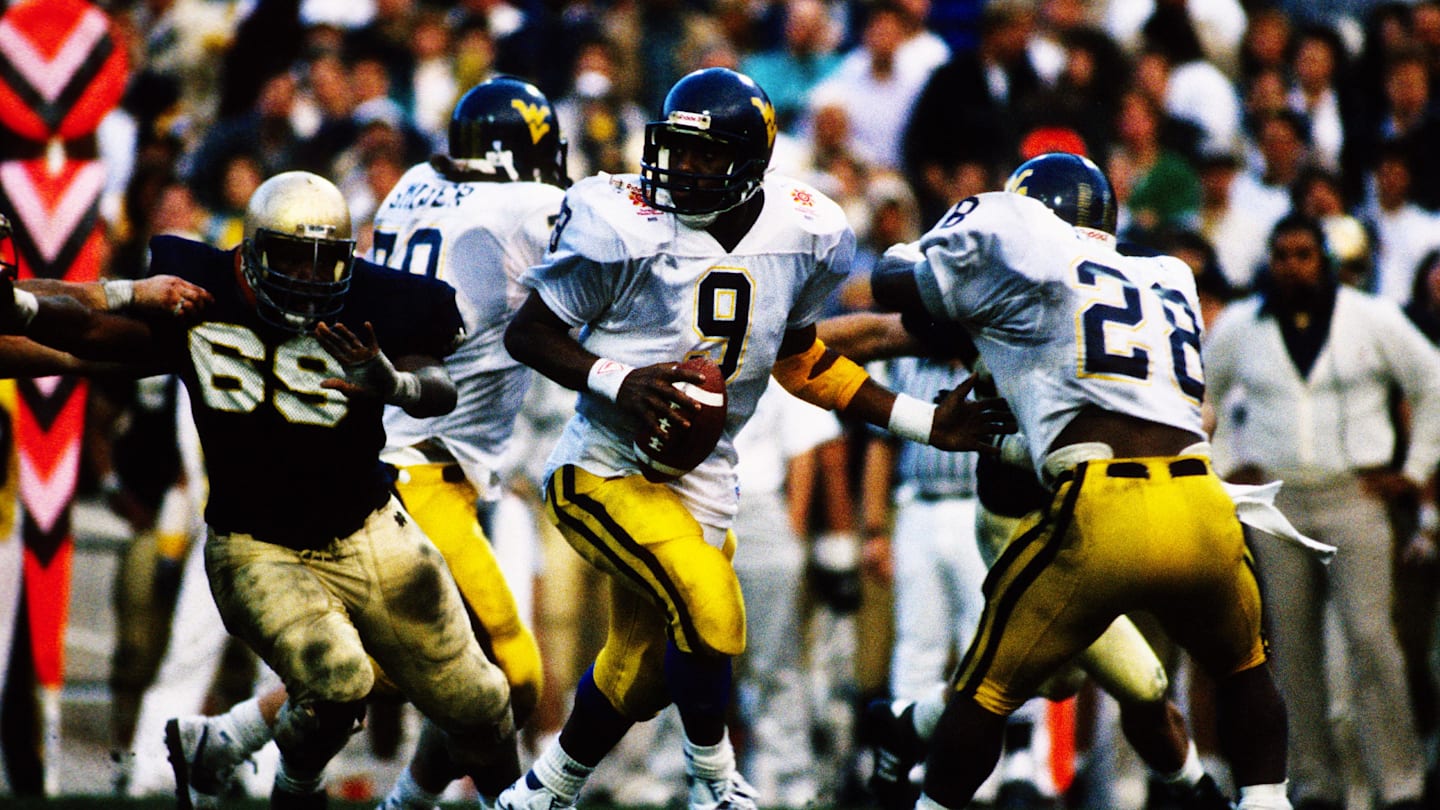
NIL has changed the game in college athletics in a big way. Not only can athletes earn money from local and national businesses, but they can now be paid directly by the university they attend, thanks to the House Settlement.
This got me thinking. Which former West Virginia legends would have made the most money had NIL been a thing during their playing days?
Before I get into my top five, I want to make it known that I tried to include some defensive players, but there was just no room. Plus, we all know skill players on offense are the ones who typically make the most money.
Honorable mention: RB Avon Cobourne, WR Stedman Bailey, LB Darryl Talley, CB Aaron Beasley.
I know what you’re thinking..what?!? Fifth?!? As special as Tavon Austin was, wide receivers just aren’t valued as much as quarterbacks, of course. Don’t get me wrong, he was widely viewed as one of the most electrifying players in college football during his playing days, but his national audience really exploded after his senior year when the “Only One” highlight video went viral. Tavon would have made a lot of money, but probably not as much as his quarterback.
Speaking of the guy who threw it to Tavon, Geno checks in at No. 4. Heck, you could make a case that he should be a spot higher, but I’ll explain my reasoning for that here in a second. Geno was one of the most accurate quarterbacks in college football and wasn’t afraid to take shots downfield. Other schools would have been doing everything they could to pry him out of Morgantown if the NIL era were during his time. Could you imagine the type of money that would have been thrown at him after the Orange Bowl? Holy smokes.
Slaton is the highest-ranked non-QB on this list. I have him just ahead of Geno because he was, after all, an All-American and finished fourth in the Heisman Trophy voting in 2006. You also have to keep in mind how valuable running the football was in the early 2000s. With the numbers he posted in ’06, it would have made it very difficult for WVU to keep others away.
Had Pat White arrived in Morgantown, say, 10 years later, he would have been viewed as a first-round draft pick. When he came out, the NFL hadn’t really opened up to the idea of smaller, mobile quarterbacks, and yet he still went in the second round. White was an unstoppable force during his college days and would have had some massive offers after the Sugar Bowl, let alone after the Fiesta Bowl, when schools could have tried to take advantage of Rich Rodriguez leaving for Michigan.
“The Maj” was truly ahead of his time. He was a unique talent back in the 80s, as dual-threat quarterbacks were more of a rarity. All of the blue bloods would have done everything they could to try to get their hands on the unicorn at the most prized position. This is what puts Major ahead of Pat (on this list) for me. He would have had more value because there was nothing else like him in college football. As far as who the greatest Mountaineer ever is? That’s a different debate, and one I’m not taking a side on. Sorry.
MORE STORIES FROM WEST VIRGINIA ON SI
WVU Found an Athletic OL Project With Big Upside in Justyn Lyles
Big Surprise or a Total Flop? CBS Sports Lays Out Best, Worst-Case Scenarios for WVU
No More Preseason Picks: Big 12 Ditches Poll After Media Misses Again and Again
Darian DeVries Can’t Even Congratulate the Man Who Helped Him Land the Indiana Job
NIL
As Jerome Bettis Jr. Starts at Notre Dame, His Father Questions NIL Era
Jerome Bettis lived life as a major college athlete in the early ’90s when he helped form one of the great backfields in the history of Notre Dame football. He then went on to a Hall of Fame NFL career with the Rams and Steelers before retiring and eventually returning to South Bend some 30 […]
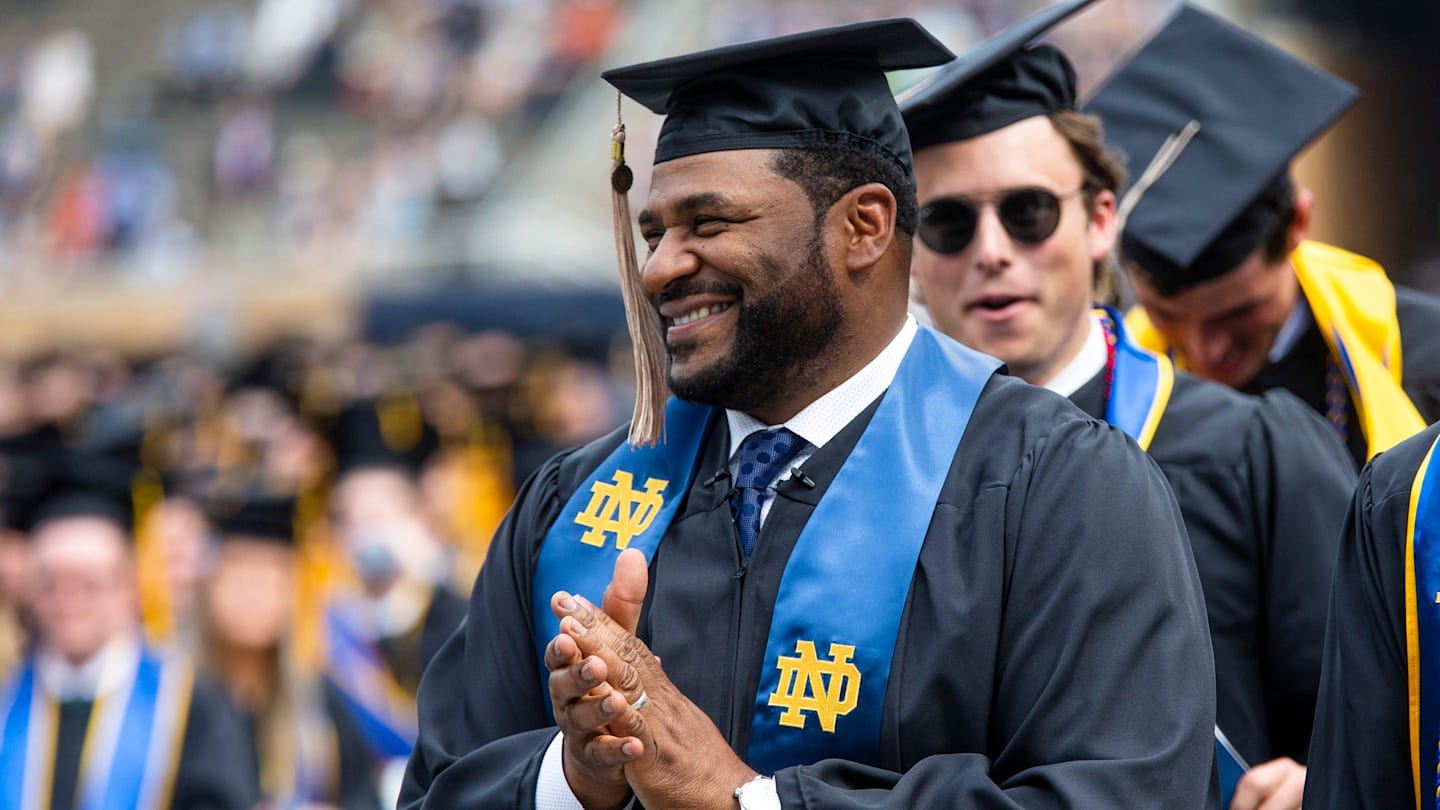
Jerome Bettis lived life as a major college athlete in the early ’90s when he helped form one of the great backfields in the history of Notre Dame football. He then went on to a Hall of Fame NFL career with the Rams and Steelers before retiring and eventually returning to South Bend some 30 years later to earn his degree.
Now Bettis is enjoying life on the other side of things, this time as a parent of a Notre Dame football player. Jerome Bettis, Jr. is a freshman wide receiver for the Fighting Irish and is getting set for his freshman year this coming fall.
— Jerome Bettis Jr (@jeromebettisjr) March 17, 2024
The elder Bettis can certainly see differences in college sports now versus when he played for Lou Holtz, and some of them he’s not too fond of.
“One of the first two questions is gonna be money.” Bettis told the Sporting News, “That was never in the equation. What you used to look for is not necessarily the priority as much. That’s the scary part about this new NIL world that these players are living in. The educational side, I think, is now put on the back burner with the understanding that it’s about the NIL and it is about playing time, right? And, I think that’s the way this, it’s kind of been skewed. I’m not a big fan of, kind of how the process is. I understand it,” Bettis told Andrew Hughes.
Don’t get it confused, Bettis isn’t against NIL, but he’s certainly not a fan of the lack of true commitment that comes these days.
“I think the NIL is necessary, but I do believe you’ve gotta find a way to get the players a little bit more commitment, in a sense that, right now, NIL with the transfer portal makes it a free agency fest. I think it really disrupts a young person’s opportunity with the education. Because if I’m transferring year to year, how is the education affected by that? Because ultimately, what I try to make sure of, that the young people understand when I’m talking to them, is that even if you do have an incredible NFL career, you may play eight, 10 years.
Bettis noted that even those with the best NFL careers post-college have a lot of life left following their playing days.
“You’re gonna be 32, 33, 34 years old. That degree is going to be necessary at some point. You have a long life to live. That education with pay dividends and will be a factor. But if you’re not considering it at all, then it can be to your detriment.”
Based on reading the headline on The Sporting News webpage today, I was worried that Bettis was going to come off sounding like an old man yelling at a cloud. I think what he has to say speaks to why Notre Dame is having so much success in recruiting lately, and specifically with sons of former NFL players.
Those guys get what life is like during a pro football career as well as after. At 16 or 17 years old they may think football will last forever, but before you know it, it’s done, and there are decades upon decades left to live and thrive elsewhere.
Having a degree in something other than Underwater Basket Weaving is a key part of the opportunity that is afforded and Bettis probably has experience of former teammates in the pros could have used more of the academic opportunity, and fears those missed chances may only get worse with this generation when they jump from program to program on an annual basis.
NIL
5
Many college football fans believe NIL is ruining the sport they love. In today’s age, it feels like players have no loyalty and are chasing the biggest paycheck over staying with a program and developing throughout their careers. Despite the criticism of NIL, one of the benefits is that it allows high school athletes to […]


Many college football fans believe NIL is ruining the sport they love. In today’s age, it feels like players have no loyalty and are chasing the biggest paycheck over staying with a program and developing throughout their careers.
Despite the criticism of NIL, one of the benefits is that it allows high school athletes to immediately make money to support their families through things like brand deals. One that has taken advantage of NIL is Adidas, and the company just announced its newest class of football stars to represent the brand.

Adidas Unveils Stacked 2025 NIL Class Featuring Top Football Recruits
Adidas recently announced its 2025 NIL class, featuring six top recruits in the 2026 cycle. Each of these athletes will be featured in brand campaigns for the company throughout their final year of high school.
The class is headlined by five-star Tyler Atkison, the No. 1 linebacker in the 2026 class, and five-star LSU commit Tristen Keys, the No.1 wide receiver in the 2026 class.
I’m blessed to continue #AtkNup with #Adidas.
@adidasfootball @adidas @adidasUS @grayson_fb @MilesGarrettTV @On3NIL @On3Recruits @ChadSimmons_ @samspiegs @TomLoy247 @GDPsports @Mhoward38 @MensHealthMag @RecruitGeorgia@jeffsentell @Zack_Poff_MP https://t.co/jNrzB87XRi
— Tyler Atkinson (@Tyler16Atkinson) June 27, 2025
Along with Atkinson and Keys, Adidas class also features four additional top receiver recruits: five-star Ohio State commit Chris Henry Jr, five-star Calvin Russell, four-star Ohio State commit Kayden Dixon-Wyatt, and four-star Texas A&M commit Madden Williams.
It’s a star-studded high school class for Adidas and represents the ever-changing landscape of college athletics in the age of NIL.
While there are obviously downsides to the current NIL system, the fact that these young athletes can sign with a company like Adidas and earn money before they even get to college highlights how NIL can be so special and make massive impacts on these players’ lives.
Every athlete that Adidas signed to this campaign has proven themselves at a high level and are all regarded as some of the best high school football players in the country. They’ve earned the right to be able to make money off of their name, image, and likeness, and Adidas is giving them the platform to do so.
Time will tell if their college careers pan out. Still, they have at least had the opportunity to make life-changing money by signing with Adidas for their senior years and will attempt to solidify their place in college football during the 2026 season.
-

 Motorsports2 weeks ago
Motorsports2 weeks agoNASCAR Weekend Preview: Autódromo Hermanos Rodríguez
-

 Motorsports3 weeks ago
Motorsports3 weeks agoNASCAR Through the Gears: Denny Hamlin has gas, a border needs crossing, and yes, that’s a Hemi
-

 High School Sports3 weeks ago
High School Sports3 weeks agoHighlights of the Tony Awards
-
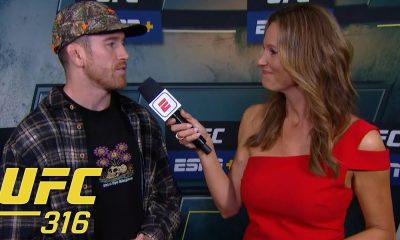
 Professional Sports3 weeks ago
Professional Sports3 weeks agoUFC 316
-
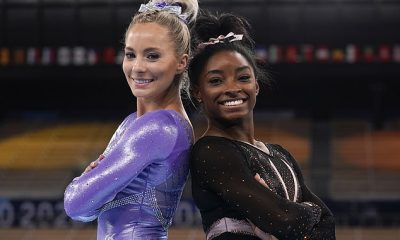
 Health2 weeks ago
Health2 weeks agoGymnast MyKayla Skinner Claims Simone Biles 'Belittled and Ostracized' Her amid Riley …
-
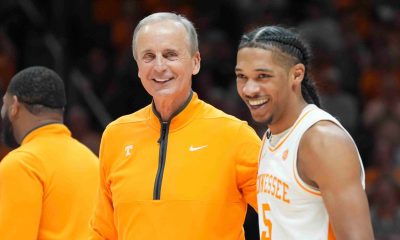
 NIL3 weeks ago
NIL3 weeks agoTennessee law supersedes NCAA eligibility rule
-

 Motorsports2 weeks ago
Motorsports2 weeks agoNASCAR Race Today: Mexico City start times, schedule and how to watch live on TV
-

 Sports3 weeks ago
Sports3 weeks agoCoco Gauff, The World's Highest
-

 College Sports3 weeks ago
College Sports3 weeks agoFisk to discontinue history-making gymnastics program after 2026 | Area colleges
-

 Social Media2 weeks ago
Social Media2 weeks agoPune Athletes Make Global Mark at IRONMAN Hamburg and Brazil 2025




































